Sida Huang
AI Flow: Perspectives, Scenarios, and Approaches
Jun 14, 2025Abstract:Pioneered by the foundational information theory by Claude Shannon and the visionary framework of machine intelligence by Alan Turing, the convergent evolution of information and communication technologies (IT/CT) has created an unbroken wave of connectivity and computation. This synergy has sparked a technological revolution, now reaching its peak with large artificial intelligence (AI) models that are reshaping industries and redefining human-machine collaboration. However, the realization of ubiquitous intelligence faces considerable challenges due to substantial resource consumption in large models and high communication bandwidth demands. To address these challenges, AI Flow has been introduced as a multidisciplinary framework that integrates cutting-edge IT and CT advancements, with a particular emphasis on the following three key points. First, device-edge-cloud framework serves as the foundation, which integrates end devices, edge servers, and cloud clusters to optimize scalability and efficiency for low-latency model inference. Second, we introduce the concept of familial models, which refers to a series of different-sized models with aligned hidden features, enabling effective collaboration and the flexibility to adapt to varying resource constraints and dynamic scenarios. Third, connectivity- and interaction-based intelligence emergence is a novel paradigm of AI Flow. By leveraging communication networks to enhance connectivity, the collaboration among AI models across heterogeneous nodes achieves emergent intelligence that surpasses the capability of any single model. The innovations of AI Flow provide enhanced intelligence, timely responsiveness, and ubiquitous accessibility to AI services, paving the way for the tighter fusion of AI techniques and communication systems.
Enhance Vision-Language Alignment with Noise
Dec 17, 2024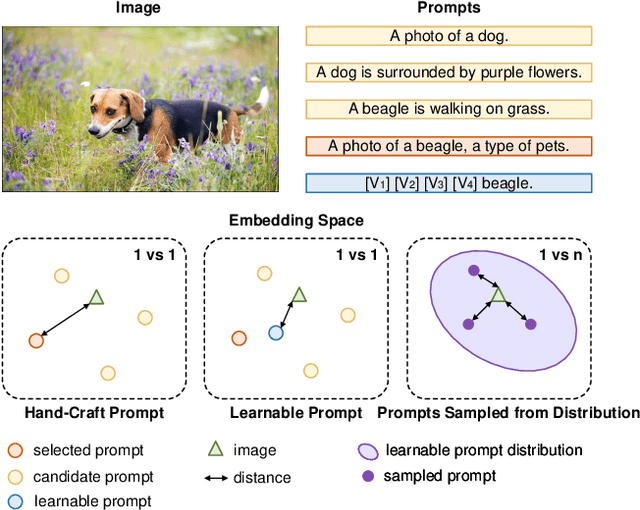
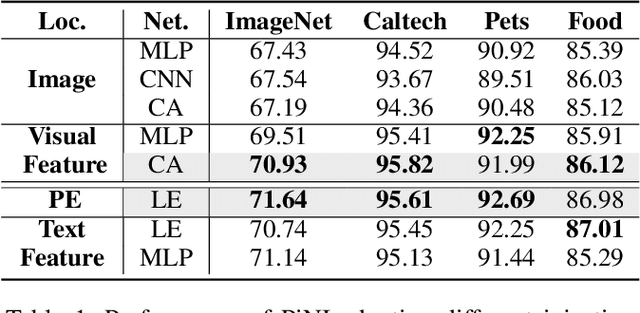

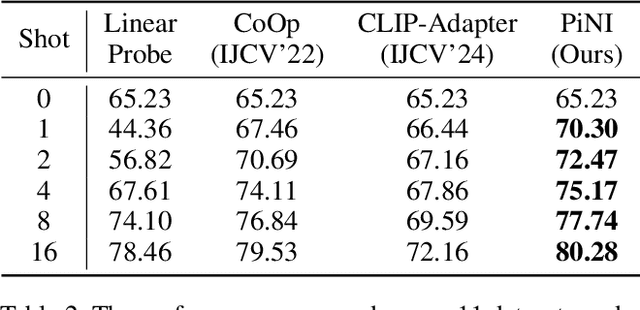
Abstract:With the advancement of pre-trained vision-language (VL) models, enhancing the alignment between visual and linguistic modalities in downstream tasks has emerged as a critical challenge. Different from existing fine-tuning methods that add extra modules to these two modalities, we investigate whether the frozen model can be fine-tuned by customized noise. Our approach is motivated by the scientific study of beneficial noise, namely Positive-incentive Noise (Pi-noise or $\pi$-noise) , which quantitatively analyzes the impact of noise. It therefore implies a new scheme to learn beneficial noise distribution that can be employed to fine-tune VL models. Focusing on few-shot classification tasks based on CLIP, we reformulate the inference process of CLIP and apply variational inference, demonstrating how to generate $\pi$-noise towards visual and linguistic modalities. Then, we propose Positive-incentive Noise Injector (PiNI), which can fine-tune CLIP via injecting noise into both visual and text encoders. Since the proposed method can learn the distribution of beneficial noise, we can obtain more diverse embeddings of vision and language to better align these two modalities for specific downstream tasks within limited computational resources. We evaluate different noise incorporation approaches and network architectures of PiNI. The evaluation across 11 datasets demonstrates its effectiveness.
Deep Learning Based Solar Cell Recognition for Optical Wireless Power Transfer
Oct 18, 2024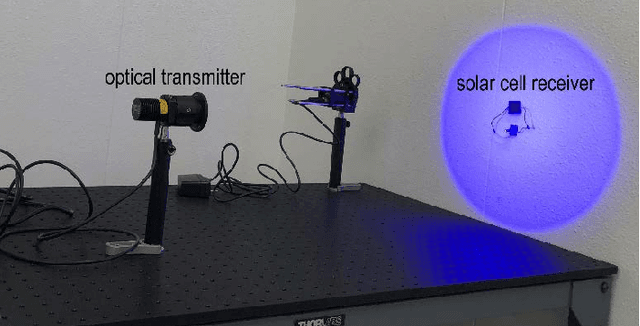

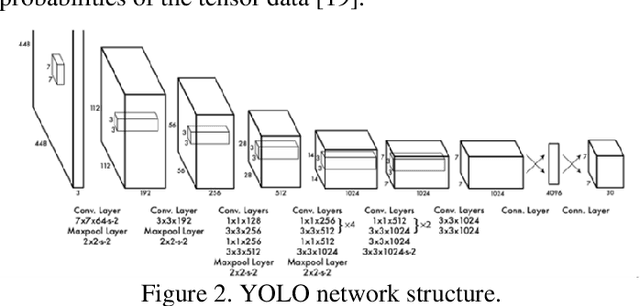
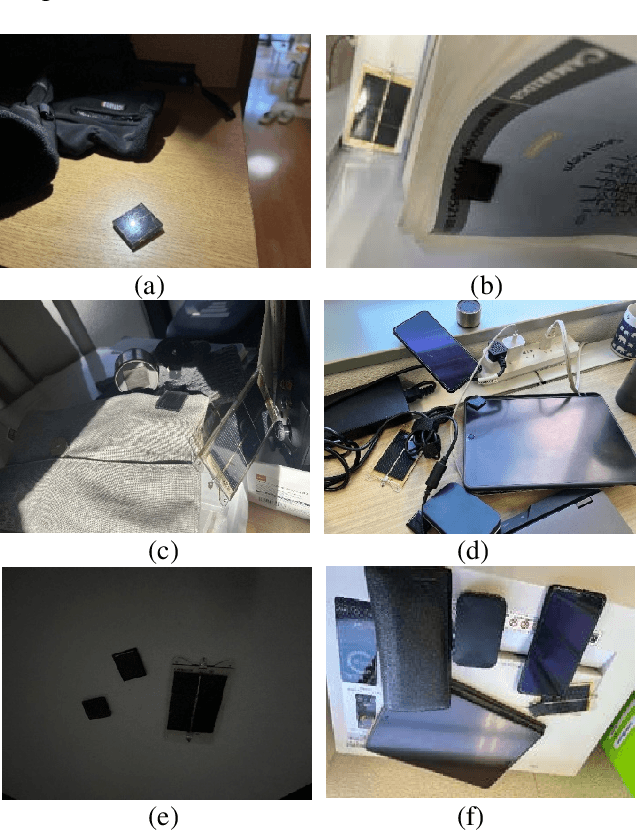
Abstract:Optical wireless power transfer (OWPT) is a technology that wirelessly transmit light energy from an optical transmitter to an optical receiver, usually a solar cell. In order to achieve the highest transmission efficiency, the solar cell receiver should be accurately aligned with the optical transmitter. Hitherto, only a few works have been existed for solar cell recognition in presence of complex backgrounds. In this paper, we employ a deep learning approach based on Yolov5-Lite for the solar cell recognition purpose, due to its lightweight, fast and easy to deploy on hardware characteristics. Our tests show a high accuracy of the employed deep learning model with the highest F1 score of 91% and mAP of 94.8%. Therefore, this deep learning model is highly promising for use in OWPT systems to precisely align optical transmitters and solar cell receivers.
Data Augmentation of Contrastive Learning is Estimating Positive-incentive Noise
Aug 19, 2024Abstract:Inspired by the idea of Positive-incentive Noise (Pi-Noise or $\pi$-Noise) that aims at learning the reliable noise beneficial to tasks, we scientifically investigate the connection between contrastive learning and $\pi$-noise in this paper. By converting the contrastive loss to an auxiliary Gaussian distribution to quantitatively measure the difficulty of the specific contrastive model under the information theory framework, we properly define the task entropy, the core concept of $\pi$-noise, of contrastive learning. It is further proved that the predefined data augmentation in the standard contrastive learning paradigm can be regarded as a kind of point estimation of $\pi$-noise. Inspired by the theoretical study, a framework that develops a $\pi$-noise generator to learn the beneficial noise (instead of estimation) as data augmentations for contrast is proposed. The designed framework can be applied to diverse types of data and is also completely compatible with the existing contrastive models. From the visualization, we surprisingly find that the proposed method successfully learns effective augmentations.
Variational Positive-incentive Noise: How Noise Benefits Models
Jun 13, 2023



Abstract:A large number of works aim to alleviate the impact of noise due to an underlying conventional assumption of the negative role of noise. However, some existing works show that the assumption does not always hold. In this paper, we investigate how to benefit the classical models by random noise under the framework of Positive-incentive Noise (Pi-Noise). Since the ideal objective of Pi-Noise is intractable, we propose to optimize its variational bound instead, namely variational Pi-Noise (VPN). With the variational inference, a VPN generator implemented by neural networks is designed for enhancing base models and simplifying the inference of base models, without changing the architecture of base models. Benefiting from the independent design of base models and VPN generators, the VPN generator can work with most existing models. From the experiments, it is shown that the proposed VPN generator can improve the base models. It is appealing that the trained variational VPN generator prefers to blur the irrelevant ingredients in complicated images, which meets our expectations.
Distribution Adaptive INT8 Quantization for Training CNNs
Feb 09, 2021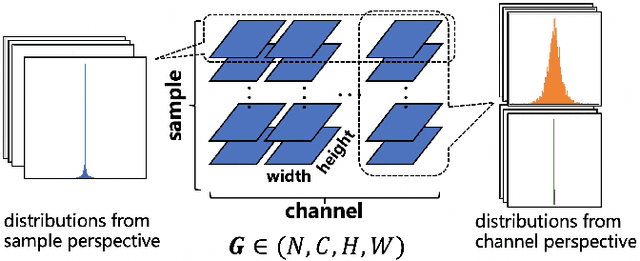



Abstract:Researches have demonstrated that low bit-width (e.g., INT8) quantization can be employed to accelerate the inference process. It makes the gradient quantization very promising since the backward propagation requires approximately twice more computation than forward one. Due to the variability and uncertainty of gradient distribution, a lot of methods have been proposed to attain training stability. However, most of them ignore the channel-wise gradient distributions and the impact of gradients with different magnitudes, resulting in the degradation of final accuracy. In this paper, we propose a novel INT8 quantization training framework for convolutional neural network to address the above issues. Specifically, we adopt Gradient Vectorized Quantization to quantize the gradient, based on the observation that layer-wise gradients contain multiple distributions along the channel dimension. Then, Magnitude-aware Clipping Strategy is introduced by taking the magnitudes of gradients into consideration when minimizing the quantization error, and we present a theoretical derivation to solve the quantization parameters of different distributions. Experimental results on broad range of computer vision tasks, such as image classification, object detection and video classification, demonstrate that the proposed Distribution Adaptive INT8 Quantization training method has achieved almost lossless training accuracy for different backbones, including ResNet, MobileNetV2, InceptionV3, VGG and AlexNet, which is superior to the state-of-the-art techniques. Moreover, we further implement the INT8 kernel that can accelerate the training iteration more than 200% under the latest Turing architecture, i.e., our method excels on both training accuracy and speed.
Unstructured Knowledge Access in Task-oriented Dialog Modeling using Language Inference, Knowledge Retrieval and Knowledge-Integrative Response Generation
Jan 15, 2021
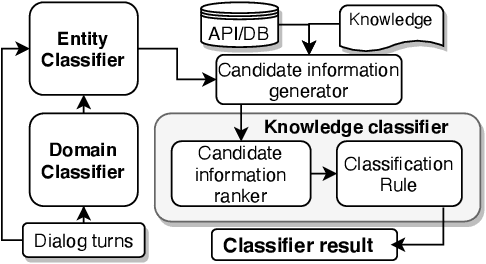

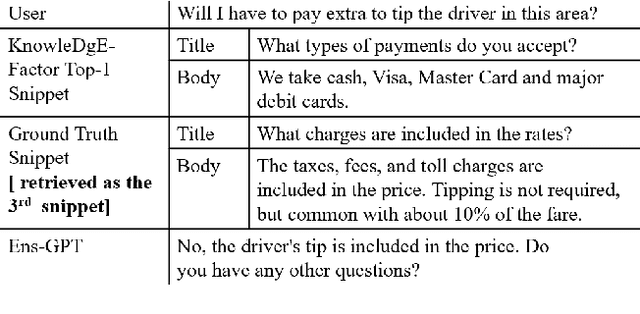
Abstract:Dialog systems enriched with external knowledge can handle user queries that are outside the scope of the supporting databases/APIs. In this paper, we follow the baseline provided in DSTC9 Track 1 and propose three subsystems, KDEAK, KnowleDgEFactor, and Ens-GPT, which form the pipeline for a task-oriented dialog system capable of accessing unstructured knowledge. Specifically, KDEAK performs knowledge-seeking turn detection by formulating the problem as natural language inference using knowledge from dialogs, databases and FAQs. KnowleDgEFactor accomplishes the knowledge selection task by formulating a factorized knowledge/document retrieval problem with three modules performing domain, entity and knowledge level analyses. Ens-GPT generates a response by first processing multiple knowledge snippets, followed by an ensemble algorithm that decides if the response should be solely derived from a GPT2-XL model, or regenerated in combination with the top-ranking knowledge snippet. Experimental results demonstrate that the proposed pipeline system outperforms the baseline and generates high-quality responses, achieving at least 58.77% improvement on BLEU-4 score.
 Add to Chrome
Add to Chrome Add to Firefox
Add to Firefox Add to Edge
Add to Edge